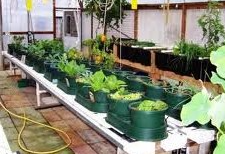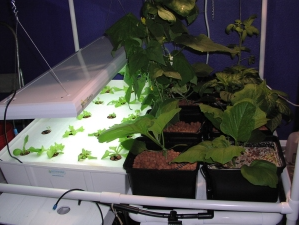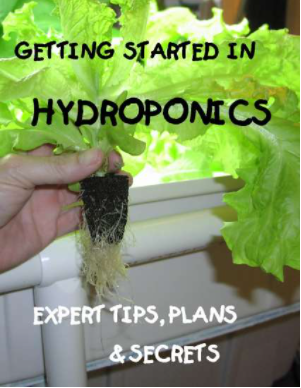Hydroponic Farming
Hydroponic farming is an unconventional way of growing crops without soil. When planting a seed in the soil, the plant extracts nutrients, minerals, and water directly from the soil. With a hydroponic greenhouse setup, the plant’s roots are exposed to nutrient-rich water. Many people have become interested in this technique, for a number of good reasons. Growing crops in a hydroponic setup and result in higher yields, better quality crops, and shorter crop cycles.
Shorter Crop Cycles
Once a hydroponic greenhouse is set up, there is relatively little prep work when beginning a new crop cycle. There is no soil to till or fertilizer to spread. There is no testing of PH levels or nutrient content. Growers can start a new crop with minimal preparation. They only need to replace the growing medium and, if needed, repair or replace any plant support structures.

A successful hydroponic grower is concerned with controlling environmental factors that affect plant growth. Ambient temperature, oxygen/carbon dioxide levels, root saturation, and water nutrient content all need to be carefully monitored. Since the plants are getting the nutrients they need, they can grow better, leading to shorter crop cycles. Several well-respected organizations including Horticulture Australia, Cornell Science Inquiry Partnerships, and various agricultural magazines and news outlets support this claim.
Automation can be a major player in maximizing short crop cycles. A commercial hydroponic greenhouse manufacturer can provide electronic systems, such as retractable shades, automatic watering, climate control, and ventilation.
No Weather Factors

Along with promoting faster growth, the hydroponic system also promotes stable and continuous growth. Since farming occurs indoors, the crops are protected from weather-related damage. No matter the weather outside, the crop can continue to thrive when under controlled conditions.
Ibis World, a market research company, gave a promising prediction for the US hydroponic farming industry based on this fact. Its market report cites weather-induced crop damage as the reason grocery stores and farmer’s markets turned to hydroponic growers for their supply of produce.
Improved Quality of Hydroponic Farming
A study found in Wiley Online Library compared the yields of hydroponic farming and vertical farming. Using lettuce as the sample crop, the researchers found that vertical farming produces greater yields per square meter. The details of the study, however, showed that the quality of vertical farming crop is inconsistent. Some of the crops are not as green as the rest, nor as healthy as the hydroponically grown lettuce. The lettuce from hydroponic farming produced a better quality crop. The fulness of the leaves and weight per plant was also more consistent.
Higher Yields of Hydroponic Farming
Researchers working at the University of Arizona showed that yields from hydroponics are greater than those from soil-based crops. The researchers harvested 35kg of lettuce per square meter from the hydroponic crop. The conventional crop only produced a little over 3kg per square meter.
Also, a study done by EdenWorks, a vertical hydroponic farm in New York, showed similar results. Edenworks has a 9,000 square foot facility that can yield 120,000 pounds of produce per year. This is the same harvest volume for 10-15 acres of farmland.
Small space Farming
 What makes hydroponics really exciting is the ability to produce high-yield, high-quality produce with a minimum of space and resources. People who have limited space can set up a hydroponic farm in their garage, basement, extra room, or even their closet! With a minimum of space, a person can start producing food for their family. This has great appeal for those living a self-sufficient lifestyle.
What makes hydroponics really exciting is the ability to produce high-yield, high-quality produce with a minimum of space and resources. People who have limited space can set up a hydroponic farm in their garage, basement, extra room, or even their closet! With a minimum of space, a person can start producing food for their family. This has great appeal for those living a self-sufficient lifestyle.

If you are interested in learning more about hydroponic farming, please take a look at the book “Getting Started in Hydroponics”. This 320 page ebook is the most complete startup guide you will find, and the last guide you will ever need. It answers all those questions such as “What system is easiest to build?“, “Can this be done with minimal budget?“, “What are the lighting requirements?” and many more.